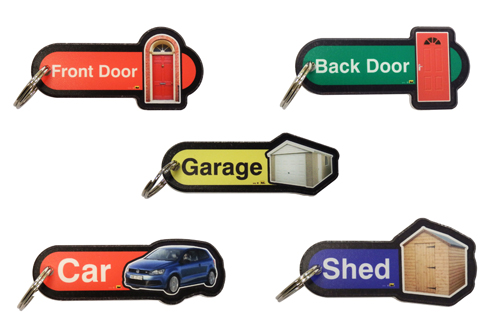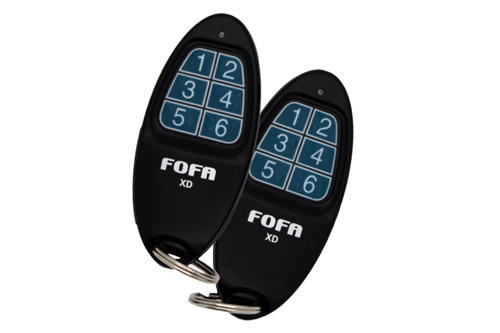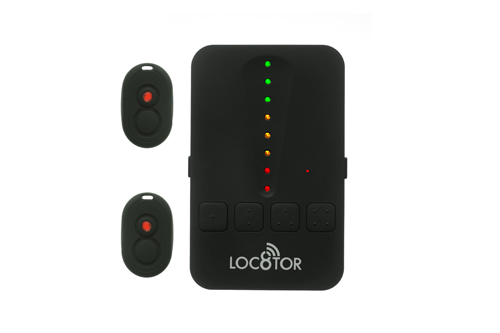What devices can help a person with dementia who loses track of their keys?
From the April/May 2016 issue of our magazine, a group of people with dementia in Berkshire tell us what they think about a range of products designed to keep track of keys.

Reading’s Empowerment Group meets every month to look at and comment on everything from training packages and questionnaires to policies and plans for work. One of our many service user review panels, this provides an important way for people with dementia to influence the work of the Society and others.
Memory problems are a common symptom of dementia, and many people find that they misplace and lose keys as their condition progresses. We asked members of the Reading group to try out products from our online shop that are intended to help keep track of keys.
Keeping track
The group were shown three products – one set of fobs to make it easier to see which key is for what, and two different electronic devices designed to help find keys if you can’t remember where they are.
The key fobs, available singly or as a set of five, use clear writing, bold colours and small pictures to label keys for front and back doors, car, garage and shed.
The Keyfinder FOFA set comes with two electronic fobs that you can attach to different items. Each fob is assigned a number, so if you lose one you can press its number on the other fob to make the lost one beep.
Loc8tor Lite is another electronic device, but uses a handset to find two tags that are each assigned a button. If you lose a tag and press its button on the handset, the tag beeps and the handset shows how close it is using sounds and coloured lights.

Simple solution
The low-tech key fobs offered a simple solution to know which key is for what, and the use of words alongside a picture and contrasting colours would make it easy to recognise each one.
The fobs looked a bit faded at first. However, once people realised they were covered with a protective film and peeled this off the fobs were much more appealing, though this film was fiddly to remove.
Group members thought the fobs could be useful for keys kept in one place inside the house. Most people carried keys in bunches and were not keen on having a different fob on each one – John said he uses a key chain and finds this effective.
Set up and range
People had difficulties in setting up the Keyfinder FOFA and Loc8tor Lite devices, finding the instructions complex and the writing small. Most group members said they would need help from someone else to assign numbers and buttons to each fob or tag.
Although the pictures in the Loc8tor Lite instructions were useful, Gill noted that they didn’t always match what the actual device looked like.
Both products worked well and with good ranges – within 10m for the Keyfinder and even farther for the Loc8tor Lite.
Brian liked how the Loc8tor Lite devices in particular felt to hold, and everyone was impressed with how the beeps and lights indicated that you are facing the right direction and getting nearer to the tag.
- Take part in our competition for a chance to win a Loc8tor Lite.

Need to remember
People noted that, with both electronic products, you would need to remember the number or button that you had assigned to a specific fob or tag if you lost it.
You also have to have one Keyfinder FOFA fob to find the other, and would need to know where the Loc8tor Lite handset was to find any of its tags.
Gill said that even though she has ‘a place for everything’ she still puts things elsewhere if distracted, and she could see herself hunting for one device that she needed in order to find the lost one.
There was agreement that for these products to work, you would need to have one Keyfinder FOFA fob or the Loc8tor Lite handset in a fixed place.








